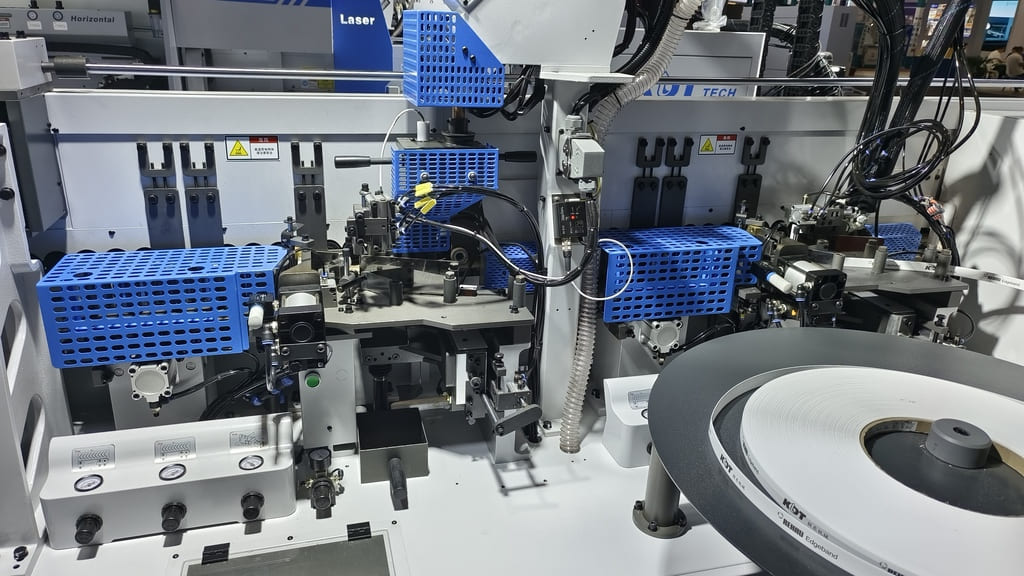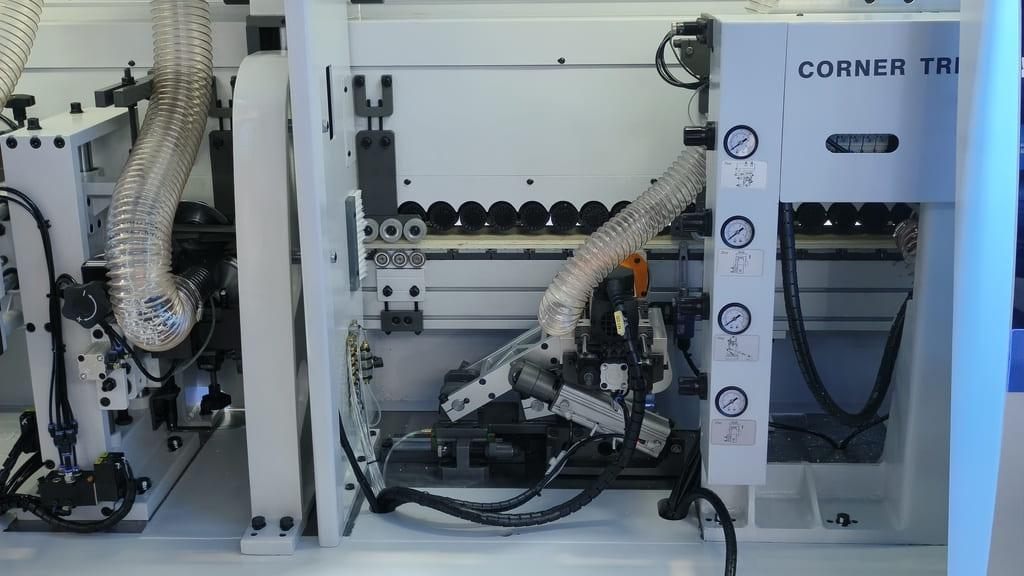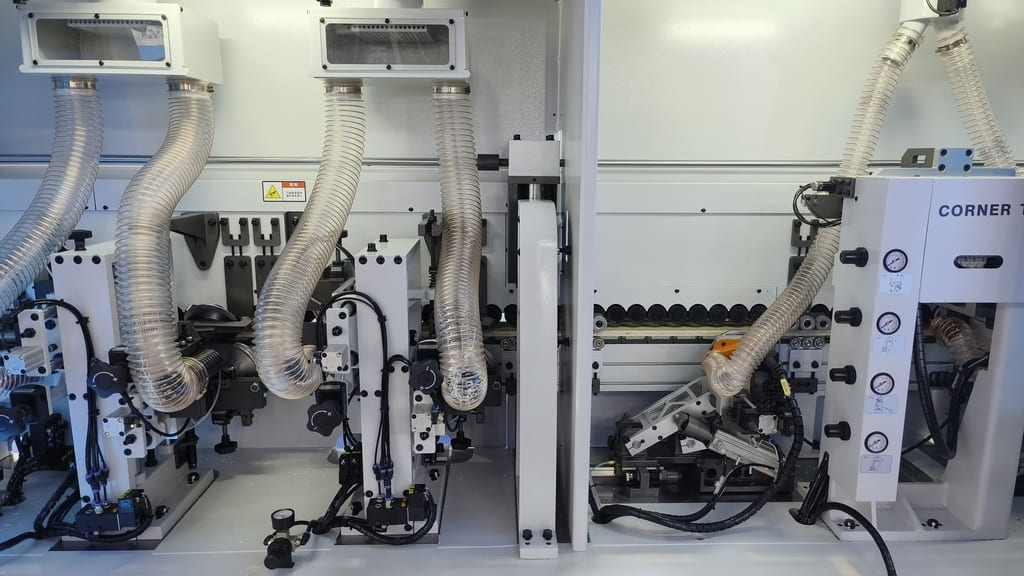Edge banding is a crucial technique in woodworking that can transform the appearance of your projects and protect vulnerable edges. This guide will walk you through the process of applying edge banding to plywood, veneer, and other materials, ensuring a professional finish for your woodworking creations. Whether you're a novice or an experienced craftsman, mastering this skill will elevate the quality of your work.
Edge banding is a thin strip of material, typically made of wood veneer or PVC, used to cover the exposed edges of plywood, particleboard, or MDF. But why is it so crucial in woodworking?
Aesthetics: Edge banding provides a finished look, hiding the unattractive layers of plywood or particleboard.
Protection: It shields the vulnerable edges from moisture and impact damage.
Durability: Properly applied edge banding increases the longevity of your furniture pieces.
Understanding the importance of edge banding is the first step towards creating professional-looking woodworking projects. Let's dive deeper into the world of edge banding and explore how to apply it effectively.
When it comes to edge banding, you have several options to choose from. Each type has its own unique characteristics and applications:
Wood Veneer Edge Banding: Made from thin slices of real wood, this type offers a natural look and feel.
PVC Edge Banding: Durable and water-resistant, ideal for kitchens and bathrooms.
Melamine Edge Banding: Matches melamine-faced boards perfectly.
ABS Edge Banding: Known for its impact resistance and color stability.
Choosing the right type of edge banding depends on your project requirements, budget, and personal preferences. Consider factors such as the material of your workpiece, the environment it will be used in, and the desired aesthetic outcome.

Accurate measurement and cutting are crucial for a seamless edge banding application. Here's how to do it right:
Measure the length of the edge you want to cover.
Add an extra inch or two to allow for trimming.
Use sharp scissors or a utility knife to cut the edge banding strip.
Remember, it's always better to cut a slightly longer piece than needed. You can always trim the excess later, but you can't add length if you cut too short!
Having the right tools can make the edge banding process much smoother. Here's a list of essential tools:
Iron or edge banding machine
Sandpaper (various grits)
Clean, damp cloth
Edge banding tape
Cutting board or heat-resistant surface
For more advanced applications, you might consider investing in an edge banding machine. These machines can significantly speed up the process and ensure consistent results, especially for larger projects.
Proper preparation is key to achieving a flawless edge banding application. Follow these steps:
Ensure the edge is clean and free from dust or debris.
Sand the edge lightly to create a smooth surface.
Wipe the edge with a clean, damp cloth to remove any sanding dust.
Allow the edge to dry completely before applying the edge banding.
Taking the time to properly prepare your workpiece will result in better adhesion and a more professional finish.

Iron-on edge banding is a popular choice for DIY enthusiasts due to its ease of application. Here's a step-by-step guide:
Set your iron to the appropriate temperature (usually medium-high).
Place the edge banding on the edge of your workpiece, with the adhesive side facing down.
Starting at one end, slowly move the iron along the edge banding.
Apply firm, even pressure as you go.
Allow the edge banding to cool before trimming.
Remember to keep the iron moving to avoid burning the edge banding or damaging your workpiece. For larger projects, consider using an edge bander for more efficient and consistent results.
While less common than iron-on varieties, glue-on edge banding offers certain advantages. Here's how to apply it:
Apply a thin, even layer of wood glue to the edge of your workpiece.
Carefully position the edge banding strip.
Use clamps or tape to hold the edge banding in place.
Allow the glue to dry completely before trimming.
Glue-on edge banding can be a good choice for curved edges or when working with heat-sensitive materials.
Trimming is a crucial step in achieving a clean, professional look. Here's how to do it:
Wait for the edge banding to cool completely (for iron-on types) or for the glue to dry (for glue-on types).
Use a specialized edge trimmer or a sharp utility knife to remove excess material.
Work slowly and carefully to avoid damaging the workpiece.
Sand the trimmed edge lightly to ensure a smooth finish.
For the best results, consider using a CNC router for precise and efficient trimming, especially on larger projects.

Achieving a seamless finish is the ultimate goal of edge banding. Here are some tips:
Use a veneer edge banding that matches your plywood or solid wood perfectly.
Apply the edge banding with consistent pressure and speed.
Trim carefully, taking your time to ensure a clean cut.
Sand the edges gently to blend the edge banding with the surface.
Use a wood filler if necessary to fill any small gaps.
Remember, practice makes perfect. Don't be discouraged if your first attempts aren't flawless – with time and experience, you'll achieve professional-looking results.
Even experienced woodworkers can make mistakes when applying edge banding. Here are some common pitfalls to watch out for:
Applying too much heat, which can damage the edge banding or the workpiece.
Not allowing enough cooling time before trimming.
Rushing the trimming process, resulting in uneven edges.
Failing to properly prepare the surface before application.
Choosing the wrong type of edge banding for your project.
By being aware of these potential issues, you can take steps to avoid them and ensure a successful edge banding application.
Proper maintenance can extend the life of your edge banded surfaces:
Clean regularly with a damp cloth and mild soap.
Avoid exposing edge banded surfaces to excessive heat or moisture.
For minor damage, use wood filler or touch-up markers.
For more severe damage, consider replacing the entire edge banding strip.
With proper care, your edge banded surfaces can maintain their appearance and functionality for years to come.In conclusion, mastering the art of applying edge banding can significantly enhance the quality and appearance of your woodworking projects. By following these guidelines and practicing your technique, you'll be able to achieve professional-looking results in no time.Key takeaways:
Choose the right type of edge banding for your project
Properly prepare your workpiece before application
Apply edge banding carefully, using the appropriate technique for your chosen type
Take your time when trimming and finishing
Avoid common mistakes by being patient and attentive to detail
Maintain your edge banded surfaces properly for long-lasting results
Remember, like any woodworking skill, applying edge banding takes practice. Don't be discouraged if your first attempts aren't perfect – keep at it, and you'll soon be creating beautifully finished pieces with ease.
Contact: RicoCNC
Phone: 0086-13390848665
E-mail: cncsale@ricocnc.com
Whatsapp:0086-15264185266
Add: NO. 60, Weixin Road, Industrial Park, Suzhou, Jiangsu, China, 215000
We chat
